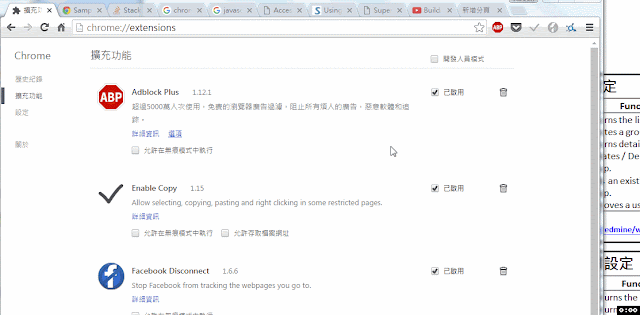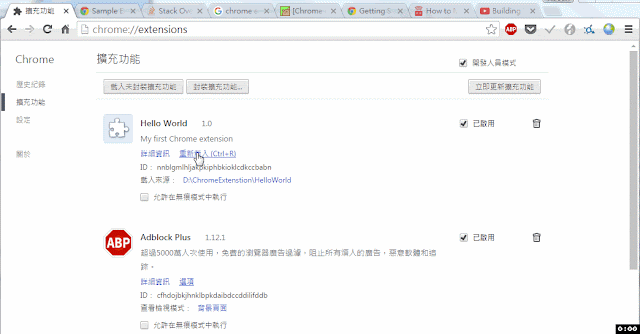income statement (損益表) 中數字的意思並無法被全然理解,除非你參照 balance sheet (資產負債表) 一起看
在考察公司的盈利能力時,不僅要看公司的利潤金額,還要看公司的利潤結構,即區分利潤中哪些是可以持續獲得的,哪些是偶然獲得的。那些偶然獲得的,就是非經常項目(nonrecurrent items)
好的存貨是資產,不好的存貨是負債。企業想美化財報、提高獲利,若無法提高營收,就只能從降低成本來下手。而存貨正是企業用來調節成本、隱藏損失、藏污納垢、掩人耳目的最佳暫存區
存貨一旦售出,資產就發揮效用創造獲利,這時存貨成本就轉成銷貨成本,也就是從資產負債表的科目轉換到了損益表。如果企業在製作財報時,刻意把存貨當滯洪池來使用,就能適度的來調整損益了
公司銷售的產品若屬專案類型,營收與成本認列的時間點就在驗收日期。如專案剛好是在十二月驗收,而該專案因為成本控制不當導致專案虧損,若不想要讓此專案影響當年度獲利,只要跟客戶協商一下,把驗收日期挪到隔年一月才驗收,此虧損就不會在今年認列
企業在做存貨核算(inventory accounting)時,在預期存貨的價格不斷上漲時才選擇後進先出法,以達到遞延所得稅支出的目的,而當預期存貨價格將持續下跌時,則通過會計政策變更將存貨計價方法由後進先出法轉為先進先出法
按照會計制度的規定,企業的盈虧應當依照規定以損益表呈現。許多企業常透過資產評估,將壞賬、滯銷和毀損存貨、長期投資損失、固定資產損失以及遞延資產等潛虧確認為評估減值,沖抵“資本公積”,從而達到粉飾會計報表,虛增利潤的目的
當企業開始進行令人起疑的會計手段時,無論這家企業看起來多安全、多有吸引力,投資人還是要遠離這種公司
Security Analysis 必須估到其子企業的營收,不管是賺錢或賠錢。有些公司會因為子企業虧損而不報,或者是雖然子企業賺錢的時候先不報,等日後母公司業績不是很好的時候才拿出來報
折舊的中心概念,就是把買機器、設備花的錢分攤到使用年限的時間內,這樣我們才能客觀的從財報看到公司費用的分攤與資產情況。如蛋糕店要把買烤箱 花的40萬元分成10份分攤到未來10年的損益之中
有些企業會利用折舊方法,來修飾自己的毛利率,如原本折舊年限從十年延長到二十年,如此每年攤提成本降低,毛利被拉高,但實際上公司並沒只有比較賺錢
折舊費用的高低可以檢視企業經營的狀況,如果一個公司折舊費用佔利潤比率過高,代表著必須一直將資金投入至先進的設備才能維持公司本身的競爭優勢。這會吞噬掉公司利潤,巴菲特認為不應該佔有太多的比率,否則一旦產業發生改變,將會造成巨幅的虧損
在研究營收紀錄時,security analysis有個重要的原則,只有在其資料有針對該公司的定性資料所支持下,其定量資料才是有用的
透過過去的營收記錄,是無法判斷這家公司是否穩定。你應該拋開數字,去研究其最根本的賺錢能力(earning power)
過去的營收趨勢向上,並不代表未來趨勢就一定向上,有可能競爭加劇、法規影響等,都會影響公司獲利
股票市場往往是先發生價格後,事後人們忙著找原因。股票市場的價格不是根據計算來的,是根據人們對事件的反應、掙扎而來。實務上來說,沒有一套公式或規則可算出一檔股票的proper value
盡管無法正確估出股票的proper value,但是你必須做到: (1) 有別於投機客,建立一套保守的投資估價方法 ;(2) 了解一家公司的資本結構與收入來源;(3) 找出資產負債表中不尋常的項目
我們建議,本益比20倍是購買一檔股票的上限
最近幾年的獲利狀況,可以作為預測未來營收的度量: 如果(1)最近幾年的市場狀況沒有特別的好;(2) 過去幾年營收的趨勢是往上的;(3) 投資人對於產業的研究讓他有信其公司會持續成長。這時,你才會比較有信心,這家公司未來是會成長的
無論你是投資客或是投機客,你的成績單是由未來的營收所決定,不是過去的營收
price-earnings ratio (本益比) 無法提供margin of safety(安全邊際),price-earnings ratio (本益比)只能提供給投資者一個可能性,即本益比較低的股票,未來的營收可能會比過去好
An attractive common-stock investment is an attractive speculation
我們建議,本益比 12 或 12.5 倍是一個比較適當的數據,這是一個必要的條件之一,還不夠滿足全部的條件,其條件還包含公司財務結構、領導階層的能力、公司與產業的未來展望等等
雖然我們不建議購買本益比超過20倍的股票,但是不是說購買的行為是錯誤的,而是這樣的股票相對投機,長期來說,比較容易賠錢
用高價未來買進績優股,本質是投機的,因為未來是否會持續成長,都是未知數
資本結構(Capitalization Structure) 可以從資產負債表得到相關的訊息,資本結構是負債與業主權益的比例,當負債越高,則風險就會越高
造成投機性資本結構的原因有:債券和優先股的比例比普通股大很多;高負債;生產成本高、利潤率低,市值比銷售額小很多倍。前兩點是因為必須在淨利潤之前扣除每年必須優先償還的利息,第三點是因為低的利潤率導致淨利潤對銷售額的變化極其敏感
好公司並不一定就是好投資,一個公司的資本結構直接影響到公司的收益,從而影響股價。公司利用槓桿的程度是不同的,有的偏於保守,有的偏於激進,很多股市奇蹟其實是這些具有投機性資本結構的股票造成的
價格介於10~20元的股票歸類於低價股。低價股的波動傾向大於高價股;在牛市,低價股通常漲的比高價股多,在熊市時,低價股跌的比高價股少
Low-priced stock有分真的低價股或假的低價股,真的低價股是真實反映其營收不佳的事實;假的低價股是,公司內部已事先知道內線先予以拋售,所導致的low price,但此時不是真的low price,不知情的buyer逢低買進卻被套牢。大部份購買low-priced stock賠錢的原因是,它們是被倒貨的buyer,促成seller的利益
投資的行為是,經過徹底的分析,承諾本金的安全性與定義滿意的回報,若違反這些規則,就是投機,不是投資
股票的真實價值是經由以下事實所決定,包括資產、營收、股利、未來展望等;但是,市場的報價卻是建立在市場操作與人性
不適當或錯誤的資料,以及未來的不確定性,導致真實價值總是難以捉摸
投資永遠都要面對未來的不確定性,所以投資人再買進時,必須確認是否有足夠的Margin of safety 來彌補未來的不確定性
Balance Sheet 可以指出與公司營運有緊密關聯的資源的數量與本質;提供分析公司收入來源的本質與穩定性;債務端顯示公司的財務狀況;可以與過去幾年的balance sheet比較,分析營收的品質,可以搭配透過現金流量表了解資金動向




























